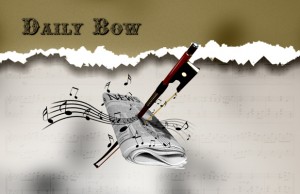 Classical music as we know it today was not really designed for the habitat it lives in now. For quite some time, secular classical music was something of an indoor cat: it was intended for intimate spaces, home performances, and sharing among family and friends. Even the symphony was conceived as a private event for the family and friends of a composer’s patron, and chamber music was just that: intended for performance in drawing rooms, salons, and private halls. The nature of the beast has changed dramatically since the 18th- and 19th-century heydays of cultural salons, and the addition of recording technology and economic development to the mix has perhaps inexorably changed the face of music performance. While it was once expected and normal for musicians to perform at home for friends and family, now more often than not, the home is a place of retreat and the outside world is the workplace.
Classical music as we know it today was not really designed for the habitat it lives in now. For quite some time, secular classical music was something of an indoor cat: it was intended for intimate spaces, home performances, and sharing among family and friends. Even the symphony was conceived as a private event for the family and friends of a composer’s patron, and chamber music was just that: intended for performance in drawing rooms, salons, and private halls. The nature of the beast has changed dramatically since the 18th- and 19th-century heydays of cultural salons, and the addition of recording technology and economic development to the mix has perhaps inexorably changed the face of music performance. While it was once expected and normal for musicians to perform at home for friends and family, now more often than not, the home is a place of retreat and the outside world is the workplace.
These days, the outside world is not the most hospitable workplace for a musician, and musicians are increasingly turning back to intimate venues and settings in an effort to not only combat the waning general interest in classical music, but to return music to its roots. Movements such as Classical Revolution, which are popping up in cities across the globe, feature a unique blend of entrepreneurship and artistic vision: “chamber music for the people”. Thirty international chapters curate casual concerts in bars and coffee shops. The idea is this: take music out of the concert hall and bring it back to the small social gathering and, in doing so, bring the whole experience closer to what it once was and can be again–personal, un-stuffy, and alive. A recent and much-shared article in “The Economist” detailed the new paths that musicians are taking in an effort to adapt to changing times, and it seems that the latest movements in musical entrepreneurship are truly motivated by more than just an effort to survive economically.
Take, for example the efforts of my fellow Rice University alum Kimball Gallagher. While at Rice, Gallagher met an independent researcher named Jacob Deegan, who often hosts house recitals in his Houston home to bring people together while “ensuring that cultural traditions flourish”. According to Gallagher, this experience of playing in a private home transformed his performance experience. He “felt a much stronger bond with the audience” than he’d felt onstage, and the audience felt a stronger connection to him. As a product of this experience, Mr. Gallagher and several friends now put on a recurring event in New York called Cocktails and Counterpoints promote restoration of the house concert tradition . Attendance is limited and by invitation only. Despite initial worries about attracting young professionals to classical music concerts, Gallagher hit on a successful formula of presenting a brief performance of music followed by conversation with the musicians. He credits the “richness of these conversations” to his balance of audience to performers: the group consists of approximately 25 non-musicians and five musicians. As long as everyone does as asked and brings a bottle of wine and some questions to share, the evening is a success.
The tricky part of this long-overdue return to intimacy and connectedness is this: bottles of wine and insightful questions do not pay the rent. In a longer-term sense, they may, by giving classical music the engaged and vibrant audience it so badly needs and deserves to sustain its future. But in the shorter-term sense, music performance is a service, and performers need to be paid for their wares. That’s where creativity comes in. Gallagher purchased his first piano by auctioning off patronage of individual keys, and many other musicians host events with similarly creative twists (homemade desserts to be purchased at the house concert, etc.). There seems to be no real formula for success, as each performer’s take on the new wave of intimate performances necessitates and courts certain types of ideas. One thing is certain, though: musicians are now expected to be entrepreneurs…but that doesn’t mean that the creative impulse has to be squashed. On the contrary, creativity both in and out of the practice room is the best way forward.














From my non-formally educated, non-classical perspective, it seems to me the roots of most genres of music — jazz, rock, pop, disco, hip hop, folk, ethnic, and especially classical, comes originally from dance. Eventually each genre becomes more cerebral and strays away from its dance roots, and as it does through history, some other genre ends up taking its place as a dance genre.
There still are people, like me, that attend dances with music like that in 17th century Playford’s “The Dancing Master”, with Purcell and other classical-ish composers (Maybe I should say pre-classical composers?).
Why not go back to the roots of classical music — Allemandes, Branles, Jigs, Bourees, Gavottes… — by teaming up with dancing masters and inviting some active, physically exciting, audience participation?
Terry those are some very good points and could make for a good article down the road on the roots of music.